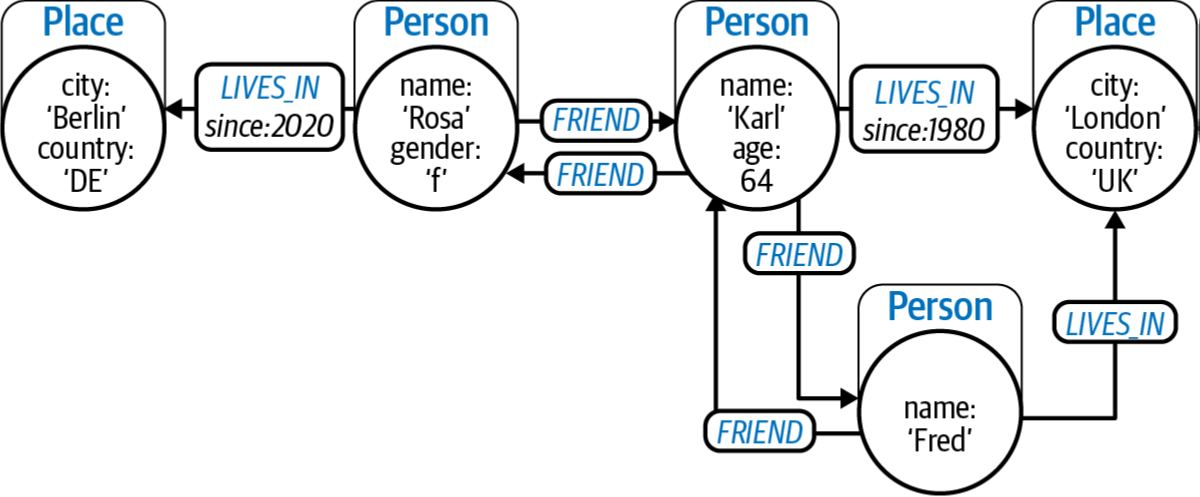Knowledge Graph based systems
A knowledge graph is a directed labeled graph in which the labels have well-defined meanings. A directed labeled graph consists of nodes, edges, and labels. Anything can act as a node, for example, people, company, computer, etc. An edge connects a pair of nodes and captures the relationship of interest between them, for example, friendship relationship between two people, customer relationship between a company and person, or a network connection between two computers. The labels capture the meaning of the relationship, for example, the friendship relationship between two people.
More formally, given a set of nodes N, and a set of labels L, a knowledge graph is a subset of the cross product N × L × N. Each member of this set is referred to as a triple, and can be visualized as shown below.

Exemple :A graph representing people, their friendships, and their locations

Exemple: A snapshot of customers and their purchases as a property graph

Exemple: A product catalog hierarchy layered on top of the customer and sales data

Some Knowledge Graphs sources
Open Knowledge Graphs.- Wikidata (https://www.wikidata.org/):
- DBpedia (https://www.dbpedia.org):
- GeoNames (https://www.geonames.org/):
- GDELT (https://www.gdeltproject.org/)
- WordNet (https://wordnet.princeton.edu/)
- BabelNet (https://babelnet.org/):
- ConceptNet (http://conceptnet.io)
